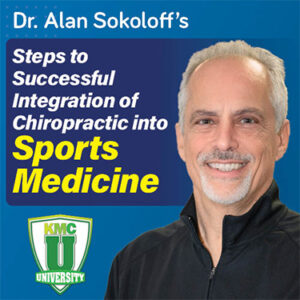
KMC University’s Chronicles | January 2023
KMC University’s Chronicles, now available to download! Your summary of the latest reimbursement and compliance news.


This Documentation Gap Analysis allows us to evaluate the significant components of your current Documentation program. It should take less than 5 minutes to complete.

Sometimes you need more than a self-service, on-demand program and need an expert to analyze your issues, train the corrections, and help you implement the changes, so they stick

This course explains the significant role chiropractic care can play in the sports industry and how a DC can succeed as a Sports Chiropractor. Start your steps to success here!

The most effective chiropractic OIG compliance programs are scaled according to the size of the practice!

KMC University’s Chronicles, now available to download! Your summary of the latest reimbursement and compliance news.

May you, your family, and all of us, find joy and remain in good health in 2023 and beyond.
According to the Centers of Medicare and Medicaid Services (CMS), there are ten principles to adhere to in the documentation of a medical record. Let’s take a look:

As the provider is not tasked with both treating the patient and documenting the encounter at the same time, services performed are often more accurately documented, which contributes to more proficient coding as well, minimizing risk.
Great news! Not a lot of changes to worry about this year, but an important few are highlighted in this Help Desk video by KMC. Check it out for what you need to know in order to be up to date with the new codes.
ICD-10 Coding Updates - this synopsis highlights a few revisions that may be relevant to chiropractic clinicians, coders, and billers.
Make Time for the Details For many doctors, documentation can be a daunting and cumbersome chore. After all, who has time for all these details…
In this helpful video, KMC addresses the most common questions we get about what goes in the documentation for an ROV. She explains what auditors are looking for in this documentation, and as usual, makes it easy to understand and to duplicate. Watch this short explanatory video and watch the documentation of ROVs in your practice go from good to great!
There is a great deal of conflicting information about how long medical records must be retained. Providers can even fear discarding anything at all. Let us clear up some of the confusion!
Hot Topics from the KMC University HelpDesk So many calls to our HelpDesk revolve around questions about these privately managed Medicare plans. Some providers and…